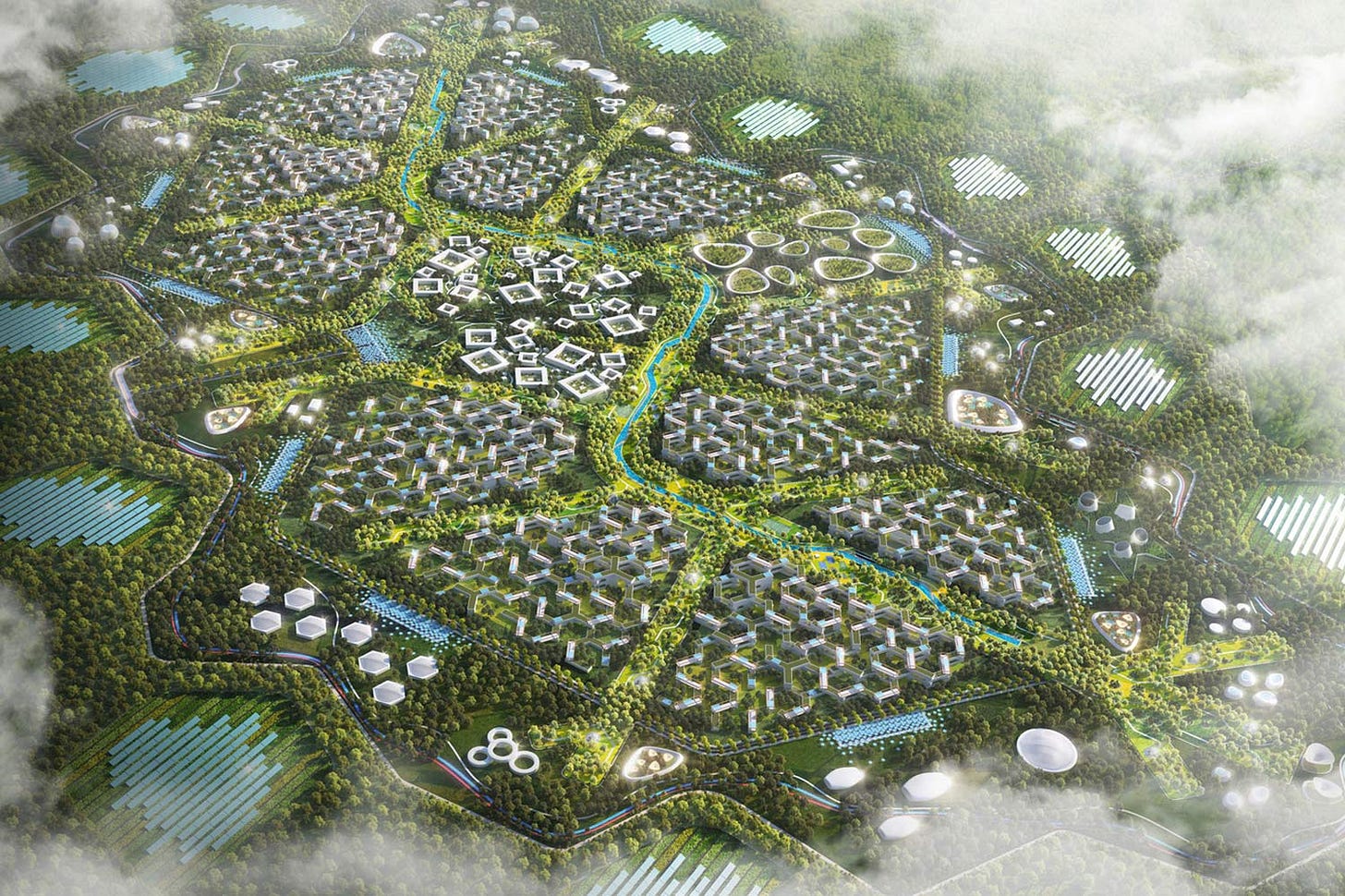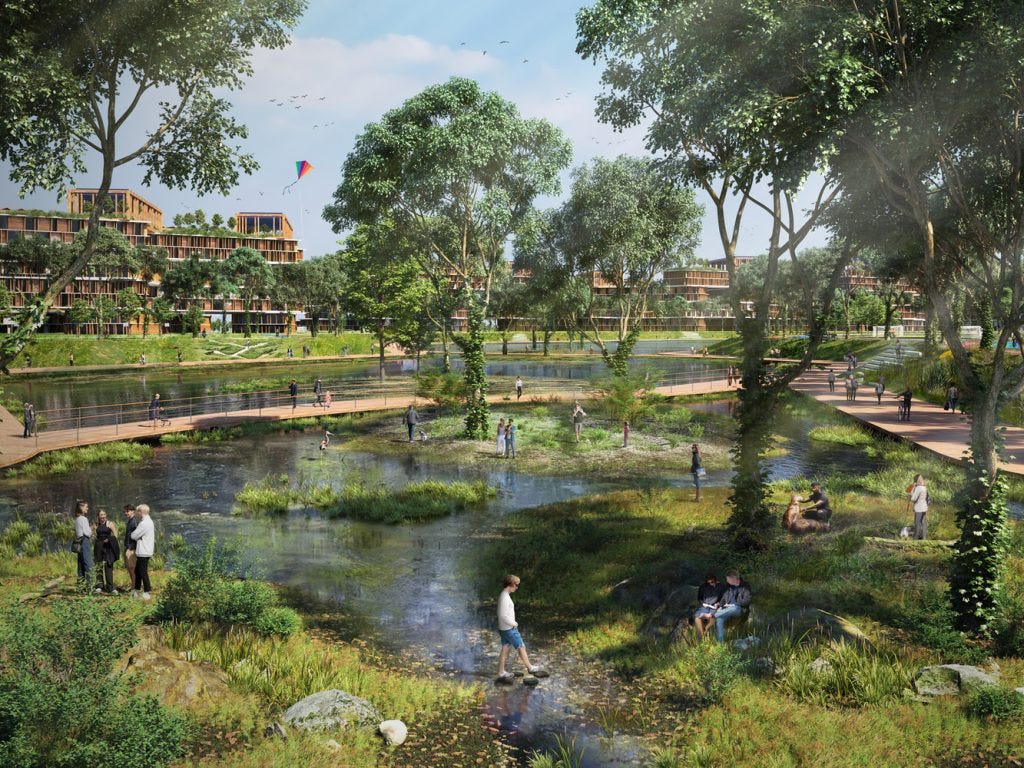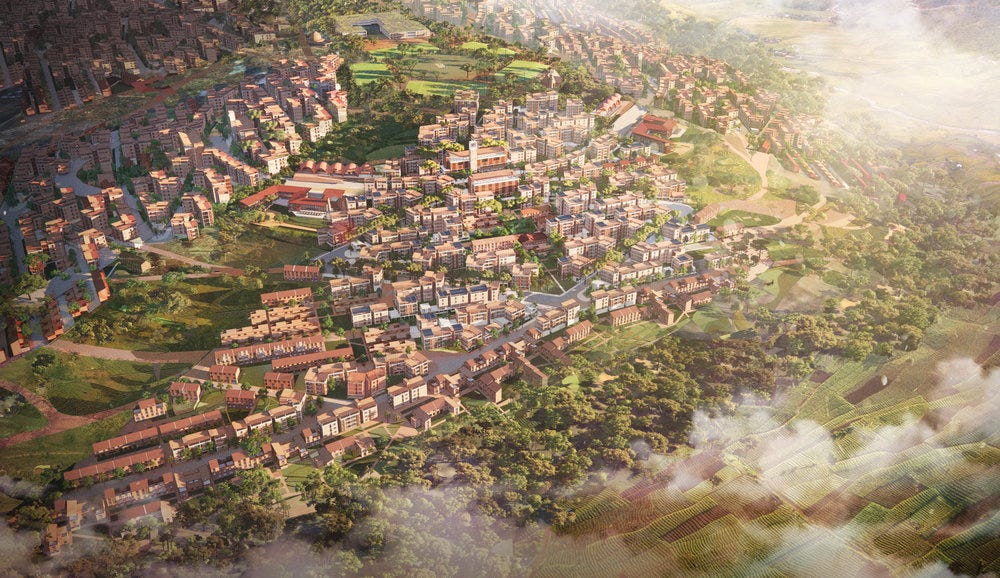Urban Surge: Africa's Path to Resilient Megacities
Context and Investment Insights - Exploring 9 Priority Areas for Climate Action
Hi all,
cities are truly remarkable, aren’t they? They're like living, breathing entities, each with its own distinct pulse—a reflection of a country’s culture, economy, collective habits, and much more. It's not merely about how many people live there; every city tells its own story through its streetscapes, transportation networks, and patches of green.
In Sub-Saharan Africa, we're witnessing an extraordinary urbanization wave. It's a time of transition, with millions moving from rural areas to the city life. Therefore, most of the development of urban areas will have to happen in the next 2 - 3 decades.
It’s a huge challenge to build the needed infrastructure fast, but also in a sustainable and climate resilient way.
So today, lets dive deeper into:
#6: Low-carbon, resilient urban areas
🕐 In a Hurry? Here's a 1-Minute Summary:
Explosive Urban Growth: Sub-Saharan Africa is experiencing rapid urbanization with a 4% annual increase in urban residents, projected to reach a staggering 1.5 billion by 2050. This demographic shift is led by youthful populations in megacities like Kinshasa, Lagos, and Luanda.
Urban Challenges: Cities are grappling with the pace of growth, leading to 60% of the urban population living in slums, high unemployment, environmental pressures, congestion, and social issues heightened by climate change impacts.
Intervention Priorities: The African Union has outlined four critical areas for sustainable urban development: eco-smart city planning, green mobility and zero-carbon buildings, climate change adaptation tools, and improving informal settlements with community-focused strategies.
Innovative Urban Projects: Notable initiatives like South Africa's 'The Parks by URB'—a net-zero city concept—and Rwanda's 'Green City Kigali' exemplify pioneering efforts in sustainable urban living, integrating climate resilience with affordable housing.
Investment Opportunities and Leaders: There’s an investment opportunity of nearly $50 billion until 2050 for the development of basic infrastructure and housing, with significant projected economic returns. Funds like the Urban Resilience Fund and the African Cities Water Adaptation Fund are at the forefront of financing such projects.
⏳ Ready for a Deeper Dive? Here's the Breakdown:
Context: Key facts and figures
(1) Africa has the world’s second largest urban population
Sub-Saharan Africa is experiencing one of the highest rates of urbanization globally. Cities are expanding rapidly as people move from rural to urban areas seeking better economic opportunities.
Africa's cities are growing fast, with the number of urban residents rising by around 4% each year. This makes Africa's urban growth second only to Asia's.
Since 1990, African urban populations have surged by 500 million. By 2050, it's projected that African cities will accommodate another 900 million individuals, bringing the total urban population to approximately 1.5 billion.
A significant portion of SSA's urban population is young, with a median age often below 20 years, with the potential to contribute to economic growth and innovation.
Megacities, such as Kinshasa (16 million) in the DRC, Lagos (15 million) in Nigeria, and Luanda (9 million) in Angola, are among the largest and most economically significant urban areas in the region, with Lagos projected to become one of the most populous cities in the world by 2030.
The scale of urbanization is creating massive demands for infrastructure, housing, and services. Urban centers are pivotal in driving economic growth, with most of the region's GDP generated in cities.
(2) Cities are struggling to cope with rapid growth and environmental challenges
The speed of urbanization is outstripping the capacity of cities to provide adequate services and infrastructure. The continent’s megacities struggle to absorb the growing population resulting in numerous problems:
🏚️ Housing/Basic infrastructure: Nearly 60% of Sub-Saharan Africa’s urban population lives in slums. The rapid growth has led to the spread of informal settlements with inadequate access to water, sanitation, and stable electricity due to lack of or flawed urban planning.
💼 Unemployment: Urban employment is often dominated by the informal sector, which can be precarious and unstable.
🌿 Environment: Environmental challenges, such as extreme weather events due to climate change, exert additional pressure on urban systems, increasing the vulnerability to disasters.
🚍 Congestion: The existing public transportation systems are often insufficient to cope with the growing urban population, leading to congestion and accidents frequently injuring pedestrians and cyclists. Plus most transport is by motorization which adds to air pollution and noise.
🚫 Social problems: There’s an increasing population of the “urban poor” leading to an higher crime and violence, stark inequalities and lack of social and community networks. Insecurity and violence are generally more prevalent in urban than rural areas, there’s significant differences between the countries though.
“African cities are increasingly becoming vulnerable because of the changing climate, extreme weather events, which are further exacerbated by demographic explosion, and governance impediments” - Mr Harsen Nyambe Nyambe (African Union Commission)
(3) 4 priority areas for intervention
The African Union defined 4 key intervention areas for the resource-efficient and sustainable development of urban areas.
🌿🌆🌱 Foster innovative, eco-smart cityscapes.
Urban development that embraces nature, merges water and green spaces with urban design to manage water better, cool down the streets, and purify the air and water. It's about managing the cities’ growth without losing touch with nature, evaluating the environment in city planning, and nurturing the soil that the cities stand on.
🔄🚗🏢 Champion recycling, green mobility, and zero-carbon buildings.
Compact design, net-zero carbon structures, and smart mobility infrastructures that encourage cycling and walking are important. Plus, the integration of water and resource efficiency, transition to renewable energy sources, and leveraging of district heating in densely populated areas to optimize energy use.
🏙️🌱🛠️ Empower African cities with the technical skills for a climate-smart future.
Supporting African cities in climate change adaptation should involve helping them access climate finance, training local officials in the nuances of climate financing, and initiating national educational campaigns on climate-resilient development. Sharing knowledge is crucial, particularly in regions where data and resources are scarce, to facilitate the adoption of sustainable practices.
🏠🛡️👩👦👦 Prioritize safer, adaptive communities in the cities’ informal or peri-urban areas.
To bolster urban resilience, land tenure reforms must be expedited that enable ecosystem restoration and guard against climate risks. Improving informal settlements should be a policy focus, with extensive, inclusive planning and community involvement to ensure successful and adaptive urban transformations. Changing decision-maker perceptions towards informal sectors is pivotal for meaningful engagement and to bring unplanned settlements into the fold of organized urban planning.
(4) Notable projects leading the way in South Africa and Rwanda
The Parks by URB is Africa’s largest net zero city concept spanning 1.700 hectares in the east of South Africa. The city will provide space for 150,000 people and be self-sufficient for water, food and energy of its residents.
Green City Kigali is an ambitious project aiming to pioneer sustainable urban living in Rwanda. As a flagship project, Green City Kigali aims to connect affordable housing with climate change adaptation and mitigation measures.
Investment insights
(1) Market: Mix of potential and challenges
The investment landscape in Sub-Saharan Africa is an area where the potential for growth intersects with unique challenges. It can be distilled into two key areas:
New Developments: There's a wealth of opportunity in creating sustainable, new urban spaces, channeling funds into renewable energy, and building eco-conscious buildings with projects like the ones featured above.
Adaptation Initiatives: It’s essential to enhance the carbon efficiency of existing cities, equipping them to withstand the unfolding effects of climate change.
The financial investment required is substantial – experts estimate a need for USD 20-25 billion for basic infrastructure investments and an additional USD 20 billion for housing by 2050.
Yet, the rewards are compelling. Case in point: Kenya, Ethiopia, and South Africa could see benefits amounting to 150-250% of their annual GDP by 2050 through climate-resilient urban development.
This isn't just building cities; it's about building economies as well.
(2) 5 Investment Areas We’re Excited About
Affordable housing: Companies that specialize in low-cost, sustainable housing to meet the demands of the growing urban population.
Healthcare services: Clinics, diagnostic centers, and health-tech startups that cater to the health needs of an urbanizing populace.
Tech-Driven Services: Startups that offer smart city technologies, such as IoT (Internet of Things) for urban management, or apps for urban service delivery (like food delivery or home services).
Urban agriculture: Businesses that leverage vertical farming, hydroponics, or aquaponics to produce food within urban environments, reducing the carbon footprint and increasing food security.
Education and Training Centers: Education providers that can up-skill the urban workforce, particularly in areas relevant to urban development like construction, urban planning, and environmental management.
(3) Investors Leading the Way - Selected examples
Development Finance Institutions such as the British International Investment, the German KfW and the U.S. Development Finance Corporation are active in funding infrastructure and urban development projects
Meridiam with their Urban Resilience Fund
African Cities Water Adaptation Fund with the objective to invest $5bn in water resilience projects in 100 African cities by 2032
Sources to learn more:
Addressing the Challenges of Urbanization in Africa by African Policy Circle, 2019
Secondary cities are Africa’s next big investment opportunity by Investment Monitor, 2023
Africa drives global urbanization by Deutsche Welle, 2023
African Cities: Unlocking Financing for Urbanisation, Megatrends Afrika, 2023
Enjoying out content?
Don’t keep it for yourself and share!
Subscribe to not miss future updates!
Feedback or thoughts?
Please let us know! Just reply to this e-mail. We’re happy to hear from you!
Thanks for reading,
Carolin
Disclaimer: All information provided is not intended to serve as investment advice. Any mention of industries or countries should not be taken as an endorsement.





